







Welcome to the largest holistic, conscious, spiritual and green network of dating sites online. We invite you to become a member


















feel the energy on our site from the moment you first















































































in.



Toxins are virtually everywhere and may be responsible for a number of challenges — everything from fatigue to joint discomfort. Give your body the detoxification support* it needs with Standard Process® supplements. They’re driven by science, packed with high-quality ingredients, and formulated to help you revitalize your wellness.

Contains ingredients from the Standard Process certified organic farm. Supports whole body detoxification and helps your liver in the processing and removal of toxins from your body.*

Helps with the body’s removal of naturally occurring toxins by supporting a healthy GI barrier and normal elimination.*
Find a health care professional near you who offers Standard Process® products at standardprocess.com/Find

Natural Awakenings is a network of holistic lifestyle magazines providing the communities we serve with the tools and resources to lead healthier lives on a healthy planet.


To advertise with Natural Awakenings or request a media kit, please email PhoenixAds@NaturalAZ.com Deadline for ads: the 10th of the month.
Go to NaturalAZ.com/pages/contact to inquire about editorial opportunities. Deadline for editorial: the 10th of the month.
Calendar events are online only, and can be submitted at NaturalAZ.com/calendar
Advertise your products or services in multiple markets! Natural Awakenings Publishing Corp. is a growing franchised family of locally owned magazines serving communities since 1994. To place your ad in other markets call 239-434-9392. For franchising opportunities call 239-530-1377 or visit NaturalAwakenings.com


Tracy Patterson, BSc, MES
DESIGN & PRODUCTION Vegetorium, LLC

Sara Gurgen
Hass Solutions
Locable
Natural Awakenings – Phoenix 17470 N Pacesetter Way Scottsdale, AZ 85255 Tracy@NaturalAZ.com NaturalAZ.com

CEO/Founder Sharon Bruckman
COO/Franchise Sales Joe Dunne Layout & Design Gabrielle W-Perillo Financial Manager Yolanda Shebert Asst. Director of Ops Heather Gibbs Digital Content Director Rachael Oppy National Advertising Lisa Doyle-Mitchell Administrative Assistant Kristy Mayer

© 2022 by Natural Awakenings. All rights reserved. Although some parts of this publication may be reproduced and reprinted, we require that prior permission be obtained in writing.
Natural Awakenings is a free publication distributed locally and is supported by our advertisers. Please contact us to find a location near you.
We do not necessarily endorse the views expressed in the articles and advertisements, nor are we responsible for the products and services advertised. Check with a healthcare professional regarding the appropriate use of any treatment.
As I was reading this month’s article “12 Quick Fixes for Anxiety,” on page 28, I kept thinking, “Where is the quick fix I use?”

Personally, I’ve found working is the best “medicine” for my anxiety, worry, blues—a technique actually backed by famous American writer and lecturer Dale Carnegie in his book, How to Stop Worrying and Start Living.
Some good old-fashioned work seems to dissolve any worries of the day. And the type of work can be anything from engaging in business responsibilities to cleaning the house, as long as it’s something that keeps me moving in body and/or mind and keeps me in a productive mode. Working out can do the trick, too, especially if it involves sweating!
I’ve actually made a habit of addressing anxiety with work. Most days I work in some capacity, but the tendency to procrastinate due to overthinking when I’m worrying usually leaves me with an unproductive, unfulfilling day (and time is a nonrenewable resource!).
To solve this, I’ve made a habit of automatically going to work on something if I wake up in worry mode.
We all have down days from time to time as well, and I know that getting to work on something helps me immensely with that. I recall being in a funk years ago, and I pushed myself to do a major organization of my closet. Not only did I feel better by the end of the day, but I accomplished something I had been meaning to do for ages. And the day was over before I knew it.
Because that’s the thing, for most of us, we just need to get through the day—the worry, anxiety, blues will be gone when we wake up tomorrow.
Please note that all deadlines (advertising and editorial) are the 10th of the month prior to the edition being published.
For example, November 10 is the deadline for all December edition submissions.




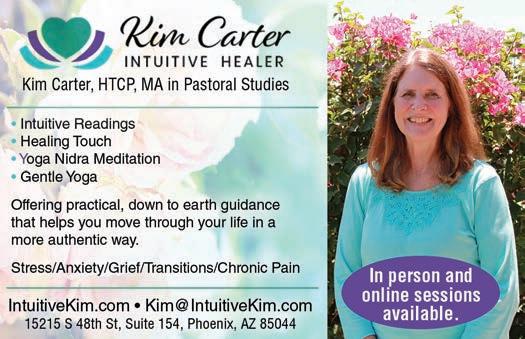

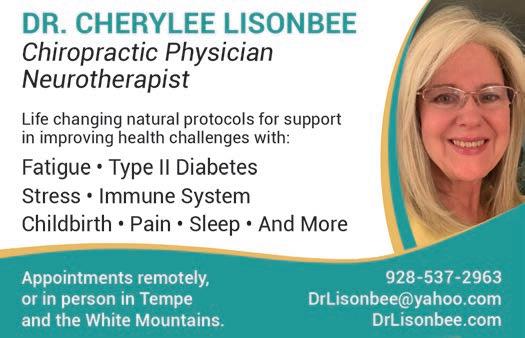
Inc. is hosting its Integrative NLP Practitioner Certification Training from 9 a.m. to 8 p.m. Thursday, Decem ber 1, through Sunday, December 4, at the Doubletree by Hilton Phoenix North.
Described as a user manual for your conscious and unconscious mind, neuro-linguistic programming (NLP) is used by many suc cessful people to bring about immediate and effective changes in life.
At the Integrative NLP Practitioner Certification Training, you’ll receive hands-on training, demonstrations, tools and techniques, and an action plan to put into practice as a certified practitioner following the sessions. Best of all, sessions are backed by Empow erment Inc.’s 100 percent satisfaction guarantee.
Empowerment Inc. has been providing unique training experi ences for 40 years to professionals, entrepreneurs, coaches and indi viduals wishing to advance themselves and help others do the same.
Cost: $194. Location: 10220 N. Metro Pkwy. East. For more informa tion, call 1-800-800-MIND (6463) or email Info@nlp.com. To regis ter, visit nlp.com/nlp-training-phoenix-arizona. See ad, page 15.


Yes,


The best strategy to stay upbeat may be to reach for the fruit bowl, suggests a new study comparing the habits and mental states of 428 people published in the British Journal of Nutrition. Researchers at the UK’s Aston University found that the more often people ate fruit, the lower they scored for depres sion and the higher for mental wellbeing. The frequency of fruit consumption seemed to be more important to psychological health than the total amount consumed. People that ate savory snacks such as potato chips, which are low in nutrients, were more likely to report more frequent memory lapses and greater levels of anxiety and depression. The researchers found no connection between eating vegetables and psychological health. Nutrients can be lost during cooking. “As we are more likely to eat fruit raw, this could potentially explain its stron ger influence on our psychological health,” says lead author Nicola-Jayne Tuck.

In another study, researchers from the UK’s University of Reading gave 478 young adults either high doses of vita mins B6 or B12 or a placebo. After one month, they found that 100 milligrams of the B6 (about 50 times the recommended daily allowance) significantly boosted gamma aminobutyric acid, which inhibits excitatory impulses in the brain, and reduced self-reported anxiety and depression levels. B12 had no such effects.


Although high-fiber diets reduce the risk of heart attack, stroke and cardiovascular disease, the latest research from Stanford University indicates that not all fibers are equal in their effect on different species of probiotics in the intestines. Arabinoxylan, which is common in whole grains, was found to reduce cholesterol naturally and was easier to digest than long-chain inulin, which is found in onions, chicory root and Jerusalem artichokes. Commonly used for weight-loss prod ucts, inulin was linked to a modest decrease in inflammation markers and an increase in Bifidobacterium, a “good” gut mi crobe; however, at high doses it increased inflammation and raised the possibility of liver damage.

Immunity supplements may not be all they claim to be, according to a new study in the Journal of the American Medical Association. Re searchers conducted liquid chromatography and mass spectrometry tests on 30 of the bestselling, four-starand-up immunity products on Amazon and found that only 13 contained the exact ingredients listed on their labels. Thirteen were missing some of the listed ingredients and nine con tained ingredients not listed on the labels. Missing ingredi ents were mainly plant extracts such as aloe vera, astragalus, eleuthero, ginger root and slippery elm. Added ingredients included black rice seed in elderberry extracts and panto thenic acid.
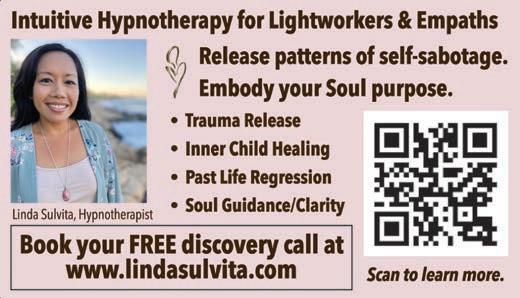

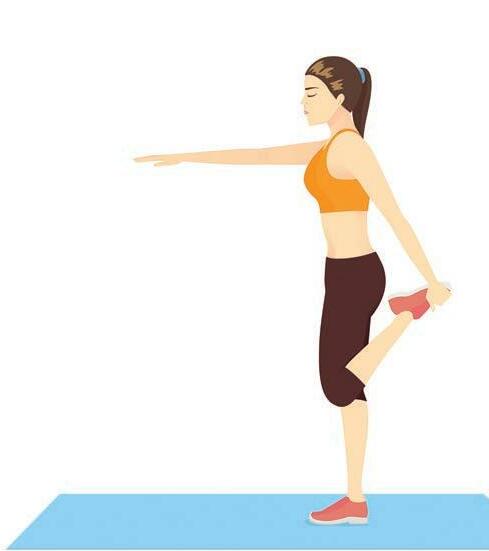

To protect against memory loss, simple stretching and balance exercises work as well as hard-driving aerobics, concludes a new study from Wake Forest University. The study enrolled 296 sedentary older adults with mild cog nitive decline such as forgetting dates, keys and names. Those that performed simple stretching routines for 120 to 150 minutes per week experienced no memory decline in a year’s time, as measured by cognitive tests and brain scans that showed no shrinkage. These re sults matched the outcome of people that did moderate-intensity aerobic training on treadmills or stationary bikes four times a week, striving for about 30 to 40 minutes of a heightened heart rate. A control group of equally matched people that did not exercise did decline cognitively. The people that exercised were supervised by trainers at local YMCAs, which may have helped them stay motivated, say the researchers.

The world’s biggest search engine has taken a key driver of global warming out of the carbon calculator embedded in the company’s Google Flights search tool, making journeys appear to have much less impact on the environment than before. Dr. Doug Parr, chief scientist of Greenpeace, says, “Google has air brushed a huge chunk of the aviation industry’s climate impacts from its pages.”
With Google hosting nine out of every 10 online searches, this could have wide repercussions for people’s travel decisions. In July, the search engine decided to ex clude all the global warming impacts of flying except CO2 following consultations with its industry partners.
Kit Brennan, a founder of Thrust Carbon, a UK company that helps businesses reduce the effect their travel has on the climate, fears consumers could come to believe that non-CO2 impacts on the climate are not relevant in the longer term, despite the science that contradicts this view. That would mean up to 1.5 percent of the warming caused by human ac tivity would be ignored, and the pressure on airlines to reduce their emissions would be cut accordingly. Some experts say Google’s calculations now represent just over half of the real impact of flights on the climate.

According to a new report (Tinyurl.com/Chemical Recycling) from the nonprofit Global Alliance for Incin erator Alternatives (GAIA), 20 states have passed bills to exempt chemical recy cling facilities from waste management requirements, despite significant evidence that most facilities actually incinerate the plastic they receive.
The petrochemical industry, as represented by the Ameri can Chemistry Council, has been lobbying for state-level legislation to promote “chemical recycling”, a process that critics say is recycling in name only. Their goal is to reclassify chemical recycling as a manufacturing process, rather than waste disposal, with more lenient regulations concerning pollution and hazardous waste.
GAIA Policy and Research Coordinator and author of the report Tok Oyewole says, “These facilities are in actuality waste-to-toxic-oil plants, processing plastic to turn it into a subpar and polluting fuel.” The report calls for federal regula tion to crack down on the plastic industry’s misinformation and affirm chemical recycling’s status as a waste manage ment process.
The U.S. Environmental Protection Agency is considering whether chemical recycling should be regulated under Section 129 of the Clean Air Act, which would define chemical recy cling processes as incineration, potentially short-circuiting the petrochemical industry’s state legislative strategy, although Oyewole says it’s unclear whether the agency’s determina tion would override existing state legislation.
Concrete consists of water, cement and an aggregate such as sand or gravel. The aggregate has to be mined from the ground, and is now in short supply in many parts of the world, while discarded tires can be partially recycled, but are often burned or relegated to landfills.
Attempts to replace some of the aggregate used in concrete with crumbled, used tires has been stymied by a bonding problem because pores in the rubber fill with water when the concrete is first mixed, and become empty holes as the water evaporates and the concrete sets.
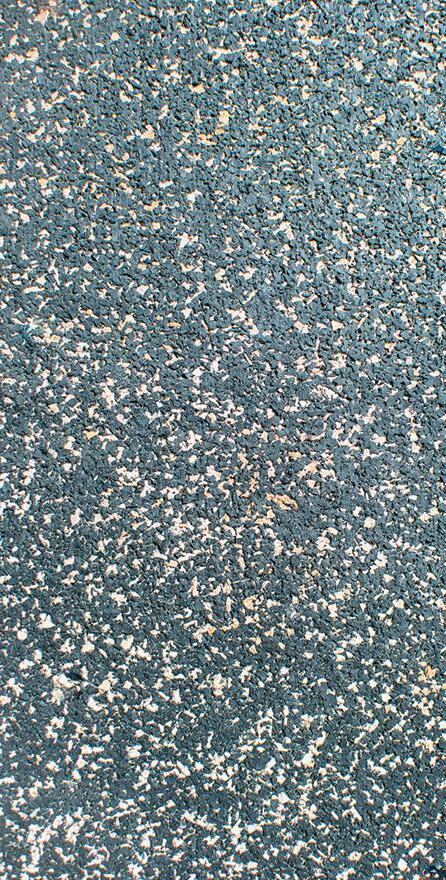
As reported in the journal Resources, Conservation & Recycling, scientists at Australia’s RMIT University have produced good-quality concrete in which all of the aggregate has been replaced with tire particles. They started with wet concrete in which all the aggregate is comprised of tire particles, then placed it in special steel molds as it set to place pressure on the concrete, compressing the particles and the pores within.
Once the concrete dried and set, the cement had bonded much better to the tire particles. When compared to previous 100-percent tire-aggregate concrete produced by conventional means, the preloaded concrete exhibited 97 percent, 59 percent and 20 percent increases in compressive, flex ural and tensile strength, respectively.

Many alpine ski resorts are going more and more green, en abling enthusiasts to reduce their impact on the planet while enjoying the winter sport. Here’s some eco-information, as well as money-saving tips:
As detailed on SkiVermont.com, the latest Vermont Ski Areas En ergy Savings Impact Report from Efficiency Vermont revealed that 13 state ski areas have completed 668 projects since 2000, including “lowenergy snowguns, compressed air right-sizing, lift terminal heater controls, thermal shells and many other systems and improvements.”
Last year, Taos Ski Valley, in New Mexico, treated 245 acres of high mortality spruce and fir trees to help restore the forest ecosys tem and diverted 10,287 pounds of waste from landfill to compost, equaling a CO2 reduction of approximately 3.2 megatons. Park City and Deer Valley, in Utah, have partnered with nearby districts to source power from an 80-megawatt solar farm. Vail Resorts, encom passing more than 40 ski areas, continues its EpicPromise program
with the goal of zero net emissions, zero waste to landfills and zero operating impact on land and ecosystems by 2030 (TheAvantSki.com).

Skiers at Big Sky Resort (BigSkyResort.com), in Montana, can minimize their carbon footprint by offsetting their trip with partner Tradewater, a Chicago company that facilitates lowering green house gas emissions. All of the resort’s lift operations have been running carbon-free since March 2020, and ongoing efficiency projects include upgrading hotel thermostats and increasing the use of solar power.
Wear sustainable brands. Patagonia, The North Face and Coto paxi are some of the brands that make ski jackets from recycled materials. Also, instead of buying new, consider patching up an old jacket if it has a tear.
Take a pass. Many individual ski resorts and associations offer lift ticket passes. Tips on making the best choice for individual or family needs can be found at SkiMag.com. It’s a popular trend: The National Ski Areas Association (nsaa.org) reports season passes now make up more than half of all lift ticket sales.
Group together. Gather family and friends in one car. Also, local ski clubs, sporting goods retailers and parks and recreation depart ments often organize group trips by chartering buses and arranging for discounted lift tickets. Warm-weather ski clubs arrange for flights to ski resorts. Making new friends along the way is a nice bonus.
Leave a clean path. Don’t leave any plastic water or sports drink containers or power bar wrappers on the snow.
 by Erin McNamara
by Erin McNamara
PurpleLotus Productions is pleased to announce the return of our popular, family-friendly Embracing Your Journey Expos. The next one will be held on Saturday, November 19, from 10 a.m. to 5 p.m. at the New Vision Center for Spiritual Living, in Phoenix.
Purple Lotus Productions is back, rested and revitalized. We were receiving messages from the universe that it was time to step back, ease up and rest for a bit. We have learned that there is value in pausing, ob serving and taking stock. Slowing down and being still allows thoughts to settle and shift, and leaves room for creativity to blossom and new ideas to emerge. We have come back re-energized and ready to create again.
Already, the community has embraced us and welcomed us back with hugs and joy and laughter. This loving welcome has been so nurturing. It feels like family—like com ing home again. It’s been so good to see fa miliar faces and connect again with so many beautiful souls. We are looking forward to connecting with more souls at our next expo and meeting new like-minded spirits.
As we have been re-emerging, Spirit has guided us to embrace a new environment— a lovely space, with such good energy and a vibrant community of spiritual beings, already familiar to many of you. We are blessed to be connecting with the New Vi sion Center for Spiritual Living as a home for our next Embracing Your Journey Expo. The center is near Tatum and Union Hills, just around the corner from the Mayo Clinic and the Desert Ridge shopping area, and there is plenty of parking. It is conve nient to several freeways—easily accessed by the Tatum Boulevard exit off the 101, just down the road from the 51 and the 17.
The Embracing Your Journey Expo will flow through the airy campus breezeway, covered patio and outdoor sitting area, as well as a labyrinth. It is a relaxing stroll

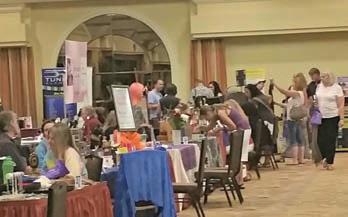
along grass-lined paths to the different ven dor and classroom areas. Snacks onsite and several dining options nearby can extend this lovely way to spend the day enjoying yourself with family and friends. Take the time for some self-care in the peaceful heal ers’ room. Attend one of the free lectures to spark a new interest. Explore new directions on your path with vendors, including psy chics, artists, life coaches and so many more. We are looking forward to seeing you all, and for you to embrace your journey with us.
Cost: $5, online or at the door; children 10 and under are free (your wristband allows you to move around the campus freely or leave and come back the same day). Location: 18010 N. Tatum Blvd. For more information or to purchase tickets, visit EmbracingYourJourneyExpo.com/ upcomingexpos.html
Erin McNamara and her daughter Robin Selby started Purple Lotus Productions in 2009 with readings and handcrafted art items. Their offerings have expanded to include their signature affirmation products, along with other self-help tools, including producing the Embracing Your Journey Expos—the leading holistic, wellness and metaphysical events in the Valley since 2015. See ad, page 13.
Advertorial

oxygen therapy (HBOT) has come out of the category of unaffordable and unavailable to something people can have in their own homes. For years, the only type available were the steel tanks filled with oxygen. Certainly they are the Ferrari of HBOT, as they create the maximum atmospheric pressure (2 ATA) and are filled with pure oxygen. A physician refer ral is required to use these chambers.
In recent years, new technology has allowed the creation of mild HBOT (mHBOT), made from a very thick plastic with special zippers that seal completely. These chambers create a slightly lower atmo spheric pressure (1.3 ATA) and are filled with ambient air. Pure oxy gen is breathed in through a cannula, so the body still gets increased oxygen. Recent research shows that mHBOT provides nearly the same benefit as HBOT.
Most mHBOT sessions last an hour or more. Once you enter the chamber, it will take a few minutes for the chamber to fill with air. Your ears will need to pop as they do when you scuba dive, go up in the mountains or take off in an airplane. The windows help you feel more comfortable and safe, since the first time you may feel claustrophobic. Once you experience it, these fears melt away. The windows also help the operator communicate with you throughout your session. The soft chamber will become firm, and once it is at its maximum pressure, it is very hard. The air pump and the valves work together to keep the chamber at the allowed atmospheric pressure (1.3 ATA). You will be given a nasal cannula so you can breathe in pure oxygen that is pumped through it. This pure oxy gen goes into your lungs, crosses the blood-air barrier, and sends higher levels of oxygen into the blood stream. Oxygen under pres sure forces more oxygen into the plasma and deep into the tissues. This can increase new blood vessel growth, providing increased oxygenation long after your sessions.
It is not hard to imagine what organs of the body could benefit from being more fully oxygenated. Every cell of our body needs oxygen to perform at its best. Athletes use mHBOT to help them

recover more quickly from workouts. Seniors love how it stimu lates collagen production. From boosting metabolism or suppress ing inflammation, to increasing blood flow to the brain (think depression or anxiety), there is a benefit to all who make it a part of their healthcare routine.
The cost will range from $100 to $300 or more a session. The costs will be higher when using a steel HBOT.
Dr. Cherylee Lisonbee is a chiropractic physician and neurotherapist, practicing in Show Low, AZ. Her practice focuses on bringing together innovative modalities, such as lasers, mHBOT, neurofeedback, hydrogen therapy and external counterpulsation therapy, to bring greater health and happiness to her clients. To contact her, call 928-537-2963. See ad, page 10.



In this day and age, we have good reason to toss and turn in our beds at night. As our nation faces climate catastrophes, acrid politics, stubborn inflation, unpredictable virus variants and hot-button issues like abortion and guns, there’s good reason our collective anxiety levels are at a high pitch. A recent Yale survey found that 70 percent of Americans report being anxious or depressed about global warming, and a Penn State survey this year found that 84 percent of us say we
are “extremely worried” or “very worried” about where the country is headed. Researchers are coining new terms: “polycrisis”, for complex, cascading crises in interacting systems, and “pre-traumatic stress disorder”, when fear of an outcome makes it as good as real to our psyches.

“It’s easy for people to feel overwhelmed now, feeling there are breakdowns and threats on many fronts. People can wonder ‘Where do I even start?’ and feel powerless and hopeless and numb,” says psychiatrist Janet Lewis, M.D., a founder of the nationwide Climate Psychia try Alliance and a University of Rochester clinical assistant professor of psychiatry. “We are part of a complex system that is moving into new ways of functioning, but there’s no way of predicting ahead of time exactly what all the features of the new ways of operating will be. That makes it impossible for us to wrap our minds around everything that is happening.”
Still, she adds, “We are also by definition part of the system, and therefore have a respon
sibility to do what we can. We can’t sit on the sidelines and merely hope that things transform in good directions. The situation being so serious also means that what we do now is really important.”
To move from anxiety into effective action, mental health experts advise several strategies: taking a wider perspective, building resil ience through self-care and taking individual steps to make a collec tive difference. As the Dalai Lama encourages, “If you think you are too small to make a difference, try sleeping with a mosquito!”
News reports almost always sound dire—just like the amygdala of our brains, journalists often see their function as focusing on threats to alert us to dangers. “Still, if you take the long view of history, we are much better off than we were 200 years ago or 1,000 years ago, but it took many years to make those changes,” counsels Robert L. Leahy, Ph.D., director of the American Institute for Cognitive Therapy and author of the bestselling The Worry Cure and the upcoming If Only
Thunberg demonstrated by holding a sign outside the Swedish parliament. Personal actions matter because numbers add up. Only 25 percent of individuals in a social group need to make a shift before significant social change follows, conclude researchers at the University of Pennsylvania School of Engineering and Applied Science that analyzed a decade of societal changes in voting, health, technology and finance. Once a group reaches that tipping point, it can trigger a change in the rest of society, says study author Damon Centola, Ph.D., author of Change: How to Make Big Things Happen.

Fears about the shape of the planet and nation are often piled on top of our everyday living anxieties about family and finances, which can in duce emotional overload. “We all have a ‘zone of resilience’ or ‘window of tolerance’, outside of which we become more reactive, less able to function effectively. But it is not fixed. We can learn tools to expand it and cultivate the capacity to be with more,” says Easterlin.
“We never know if something is hopeless until we have all the data, and we seldom have all the data,” he says. “And when it comes to political emotions, many of the predictions that are made by the ‘talking heads’ in media never come true.”
Leahy counsels patience: “Social change does not come about by one person doing something. That usually comes about by a long process of millions of people changing their attitudes and changing their behavior. Small efforts can be made on a daily basis that move this slow process forward. We need to take a longer view, rather than expect immediate change.”
In this ongoing process, anxiety has its rightful place. “Anxiety makes us look around, figure out solutions and act. This can abso lutely be turned into something positive,” says neuropsychologist

Barbara Easterlin, of Jackson, Wyoming, an expert on eco-anxiety who is on the steering committee of the Climate Psychology Al liance of North America. “Doing just one thing to help the planet consistently helps defeat anxiety.”
Taking action moves us into our power—as 15-year-old Greta

Therapy can be a part of that process by challenging us to examine “the mental narratives that can exacerbate distress,” says Leslie Davenport, a climate psychol ogy consultant and author of Emotional Resiliency in the Era of Climate Change. It’s important to find a therapist, she says, that “validates that your feelings are a nor mal response to an existential crisis.” She has helped develop new programs at the American Psychology Association and the California Institute of Integral Studies to train therapists in treating eco-anxiety. For low-cost online support, the Good Grief Network offers a 10-step, 10-week program to help process personal anxiety and grief about climate change. People are also sit ting down to share their distress at climate cafes, small local gatherings springing up across the country and globe, including some online.

Getting enough sleep, eating healthy and exercising are also key self-care strategies. When anxiety strikes, psychologists advise shifting attention from the head to the body, using such approaches as mindful


breathing, dancing and grounding. Medita tion, easily accessed these days through apps like Calm and Headspace, helps us to enter into what religious and spiritual teachings call “the still point within.”

Rather than “doomscrolling” when anxiety mounts, cutting back our media use can significantly lower stress levels, studies show. Wise media strategies include choos ing well-established, credible news sources; reading rather than watching the news to lower its emotional impact; limiting news intake to 10 minutes once or twice a day; taking a “news fast” on occasion; and pass ing up sources that incessantly feed fury.
On the other hand, it’s essential to find sources for hope, an emotion important in recovery from anxiety disorders, according to a study in Behavior Therapy. Googling “good news on climate change” will bring up articles about alternative energy growth, new super-enzymes that eat plastic rubbish and black rhinos coming back from the brink of extinction. Although dystopic books abound, others offer hope, such as
Drawdown, with its sensible, scaled-down strategies to stop global warming by 2050.
Virtually no one can take on all the prob lems of the nation and globe at once—and the good news is that unless we hold high public office, we don’t have to. Instead, “In taking action, focus on what you are good at, what your sphere of influence might be,” advises Lewis. “What are you most heartbroken over? Get involved in that and allow yourself to feel really good about what you’re doing and other people are doing.”
By narrowing our focus, we can hone in on an issue and figure out our part in its solution. “We need a broad range of collective action for transformation,” says Davenport. “For climate change, a teach er could bring social-emotional learning to climate education into the classroom or start an after school ‘green club’; an artist could use their creative medium to communicate about climate in a moving way that could engage others; a nurse
my book “A Breath of Health” to learn how we address the ROOT CAUSE of this problem.
Dr. Ingo Mahn
could create a waste-reduction initiative within a medical setting. These efforts all have ripple effects and help to elevate each other.”
In one recent study, people were found to consume less energy if they believed their neighbors did so and personally cared about conservation. Our neighborhoods are the place to take the small, meaningful steps that address the “crisis of connection” underlying rancorous national crises, says New York Times columnist David Brooks. He advocates “radical mutuality”, saying, “Nothing we do, however virtuous, can be accomplished alone.” Through simple actions like having casual conversations around town, pitching in to help a fam ily in crisis, bringing a salad to a block party, tutoring a child or holding a civic post, we build the warm relational bonds that strengthen communities. As we meet others that feel as strongly as we do about our issues, our numbers start building and collective action can unfold.
“Independent of political beliefs, many people can find common values such as wanting safety for their families, a clean environment with clean waterways and recreation in natural environments,” says Easterlin.
That, in turn, helps lower our distress. A recent Yale study found that eco-anxiety was linked to depression only among students not involved in group activities; those engaged in collective action such as being part of an environmental group, working in a letter-writing campaign or going to events or protests did not spiral downward emotionally. “Personal transformation and social transformation happen simultaneously. When you reach out and build community, you nourish yourself,” Brooks says.

As Thunberg has put it: “When I’m tak ing action, I don’t feel like I am helpless and that things are hopeless, because then I feel like I’m doing everything I can. And that gives me very much hope, especially to see all the other people all around the world, the activists, who are taking action and who are fighting for their present and for their future.”
Health writer Ronica O’Hara can be reached at OHaraRonica@gmail.com.
Stress, work and family routines can trap us in a pattern of negative thinking that feeds on itself and creates stress and unhappiness. With our internal and external worlds being bombarded these days with negativity, being optimistic is more important now than ever before.
Gratitude is not just a feel-good word. It is an emotion expressing appreciation for what one has—a universal concept in nearly all of the world’s spiritual traditions. Practicing grati tude daily is proven to have actual physiological consequences. It helps lower inflammatory markers, influences epigenetics, improves the immune system and even helps the heart, adding years to life.
Optimism has been found to correlate positively with life satisfaction and self-esteem. “Heartfelt” emotions like gratitude, love and caring produce coherent brain waves radiating to every cell of the body, as shown by technology that measures changes in heart rhythm variation and coherence.
Our subconscious governs 90 percent of our thoughts and actions. It shapes our every behavior. But the subconscious mind is nothing other than neural pathways that have been established in the brain as a result of past beliefs and conditioning. Our subconscious does no thinking of its own, but rather relies on our perception of the world around us, interpret ing verbal and nonverbal cues.
When we consciously turn negativity to positivity from the inside-out, the neural path way associated with negativity will take time to come down fully, so it is critical to practice gratitude regularly. Upon waking in the morning, say 10 things that you are grateful for. Keep a gratitude journal. Put sticky notes all over the house with gratitude messages—on photos, light fixtures, fans, exercise equipment—to create a zone of subliminal positivity.
Remember that our perspective can reflect either our pain or our power. That choice is in our hands. Know what you are grateful for each day.
Madiha Saeed, M.D., ABIHM, is the bestselling author of The Holistic RX, an international speaker, founder of HolisticMomMD.com and director of education for KnoWEwell.


RACHEL JONES on Grief in the Healthcare Front Lines
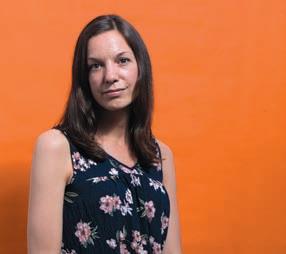
fit body SKIING FOR FITNESS AND PURE FUN Tips for Enjoying Alpine and Nordic Styles

health brief

Longevity Diet Involves Fasting, Too




global briefs
Urban Crops Can Have Higher Yields Than Conventional Farming

One-Sixth of U.S. Tree Species Could Go Extinct

Cool Pavement Program

Bacopa (Bacopa monnieri) is an amaz ing little aquatic plant that has been used for centuries to help with a number of human disorders. This herb has a rich history of use in Ayurveda and other traditional medicine systems, primarily as a nerve tonic and nootropic—a substance that enhances cognition and memory and facilitates learning.
It has been used to not only help improve brain function and memory recall but also to help reduce stress, anxiety, inflamma tion and blood pressure, and help with symptoms of attention-deficit/hyperactivity disorder and Alzheimer’s disease. Plus, it is safe for long-term use.
Modern-day research has shown that bacopa may indeed have these nootropic benefits. In addition to bacopa, there are several other natural nootropics that can help to support our brain health, namely ginseng, green tea and ginkgo biloba.
Bacopa can be grown as an aquarium plant or put into gardens and ponds, or it can be purchased at local herb shops. Most folks make a tea from dried bacopa or use a few fresh leaves (bruise first). To make tea, add a few fresh leaves or a good pinch of dried bacopa to one cup of boiled water and allow it to steep for about 10 minutes. Drink two to three cups daily.
Bacopa plays well with other plants, too. Think about people in your life. Aren’t there a few that just make you feel better when you are around them and raise your spirit?
Herbs work the same way. Sometimes com bining three to four herbs in a blend make all the individual herbs work better. Bacopa blends nicely with lion’s mane, ginkgo, ashwagandha root and plenty of others.
When you combine bacopa and lion’s mane (which is also for overall well-being, but par ticularly mood improvement), a plethora of benefits arise. Then you can add in a bit of ginkgo to help move things through your body and ashwagandha for calming, and you have a great blend for overall well-being.

Here is a nice way to make a blend similar to the one previously mentioned. Using dried herbs is most common, as these plants all grow in different climates and dif ferent times of the year. So, let’s assume we are using dried plants. This blend would be wonderful as a powder blend that you could add to your smoothie or over your oatmeal in the morning, or make some homemade capsules, which are easy to do.
3 parts bacopa powder
3 parts lion’s mane powder
1.5 parts ginkgo powder
1.5 parts ashwagandha root powder 1 part turmeric powder
Turmeric powder is always a nice addition to many formulas due to its anti-inflammatory benefits, and we probably all have a bit of inflammation somewhere in our bodies.
Remember, too, turmeric needs a little fat to be absorbed; so any time you take turmeric in any form, make sure to take it after a meal. Most of
our meals have some sort of fat in them, and it makes the turmeric more bioavailable.
A little note on lion’s mane mushrooms: These are very popular lately and grow quite easily. With the cooler weather coming and farmers markets popping up all over, check one near you and see if someone is selling fresh lion’s mane. We can find it at a few of our markets around the Phoenix area. We like to take these mushrooms and slice them thinly and sauté them in a bit of butter and fresh garlic. Then we add those slices to our favorite pizza, and wow, how delicious and healthy!
Everything we need to keep us happy and healthy is right before us. Try combining two or three of your favorite herbs and see what you get. People are better together … and so are herbs.
Kathleen Gould, registered herbalist, and Madalyn Johnson are proprietors of SW Herb Shop and Gathering Place. Gould has been an herbalist for 30-plus years and has extensive experience in herbal medicine. For more information, call 480-694-9931, or visit SWHerb.com or Store. SWHerb.com. See ad, page 11.
 Advertorial
Madalyn Johnson (left) and Kathleen Gould (right)
Advertorial
Madalyn Johnson (left) and Kathleen Gould (right)
 by Kimberly B. Whittle
Photo Sukjai/AdobeStock.com
by Kimberly B. Whittle
Photo Sukjai/AdobeStock.com
all heard the phrase, “You are what you eat,” but the connection is more than just physical because food impacts our mood, too. During the last decade, there have been an increasing number of studies explor ing what’s called the gut-brain axis and the role that microorganisms in the gut play in mental health conditions like anxiety, stress, depression and other disorders.
Depression is a leading cause of disability in the U.S. and worldwide. There are longheld views in medicine that depression is caused by imbalances in brain levels of serotonin—the neurotransmitter that plays a key role in regulating mood and other functions like digestion and sleep. These beliefs resulted in decades of extensive use of antidepressants, most of which boost serotonin in the brain.
However, research by University Col lege London, published in July in the journal Molecular Psychology, found “ no consistent evidence of there being an as sociation between serotonin and depres sion, and no support for the hypothesis that depression is caused by lowered serotonin activity or concentrations.”
Michael Gershon, M.D., a Columbia University professor of pathology and cell biology, and author of The Second Brain, has explained to psychologists that “scientists were shocked to learn” that about 90 percent of serotonin is not created in the brain, but is actually produced in the gut and carried from there to the brain, not the other way around. This relationship is called the gut-brain axis.
A recent literature review of 26 studies suggests that imbalances in gut bacteria can disrupt the two-way communication along the gut-brain axis, leading to depression and other psychiatric issues.
“Gut health is extremely important for mental health,” says Bhavna Barmi, Ph.D., a senior clini cal psychologist, relationship therapist and founder of the New Delhi-based Happiness Studio. “The traditional belief that only psychiatry and talk therapy can treat mental health has widened to include lifestyle and food, too.”

“ The truth is that our food is the primary contributor of the quality and diversity of bacteria in the microbi ome,” says Ishi Khosla, a clinical nutritionist and president of the Celiac Society of India. “ There is an intricate relationship between the gut and the brain.” Food sensitivities, alcohol and highly processed, refined and sugary foods can lead to a lower diversity of good bacteria and increases in bad bacte ria in the gut, which can trigger gut inflammation and unfavor able health conditions.
Most mood-related disorders start with inflammation of the brain as a response to inflammation in the gut. “Certain foods, like gluten, can cause an inflammatory response in the gut. Over time, sensitivi ties to gluten and other foods can lead to a ‘leaky gut’, an impairment of the gut lining that lets toxins into the bloodstream. Often, if it remains unresolved, it leads to mood-related disorders and other chronic health conditions,” says Khosla.
Clinical nutritionists and other practitioners use biochemical markers and food sensitivity tests to help identify food ingredients that trigger inflammation in patients. However, if a leaky gut is present, a food sensitivity test may not be very accurate. As Tom O’Bryan, DC, chief health officer of KnoWEwell, explains in his bestselling book The Autoimmune Fix, “When you have a leaky gut, a practitioner may do a 90-food testing panel that comes back sensitive to 20 or 25 different foods. And then the patient exclaims, ‘Oh my God, that’s everything I eat.’ Well, of course it is, because your immune system is doing what it is supposed to do—protect ing you from toxins. Once the inflammation in the gut is reduced through the elimination of wheat and other offensive foods, and the implementation of a personalized diet and protocol to heal the gut [takes place], the same food testing panel will correctly identify those few ingredients to permanently avoid.”
Kelly Brogan, M.D., a holistic psychiatrist and author of The New York Times bestsellers A Mind of Your Own and Own Your Self, as well as co-editor of the landmark textbook Integrative Therapies for Depres sion, recommends making three dietary changes to lift mood:
n Eliminate processed foods and food toxins
n Add whole foods, good fats and therapeutic foods
n Add fermented foods
Eating foods that are fresh, whole, simple and organic when
available fuels good gut bacteria and eliminates the toxins found in pack aged foods such as hydrogenated vegetable oils, pre servatives, dyes, emul sifiers, taste enhancers and sugars that can upset the proper balance in the gut. A powerful mood regulator is the omega-3 fatty acid found in such cold-water fish as salmon and trout or taken as a dietary supplement. These fatty acids regulate neurotransmission and gene expression, act as antioxidants and have potent anti-inflammatory properties. Good fats from pasture-raised meats, wild fish, eggs, nuts, seeds, olive oil, coco nut oil and grass-fed ghee also contribute to mood regulation.
“Resetting the gut through good bacteria in probiotics and feeding the good bacteria with prebiotics is a powerful tool to fight mood disorders,” says Khosla. Fermented foods such as sauer kraut, pickles (truly fermented, not just cured in vinegar), kimchi and coconut kefir are natural sources of probiotics. They are deli cious and easy to make at home.
A 2018 University of Toronto study in the World Journal of Psychiatry identified 12 nutrients to prevent and treat depres sive disorders and found that the following foods had the highest levels of those beneficial nutrients: bivalves such as oysters and mussels; various sea foods such as octopus, crab and tuna; organ meats; leafy greens; lettuces; fresh herbs; peppers; and cruciferous vegetables such as cauliflower and broccoli.
Choosing what to eat is complex and affected by culture, cost, environment and taste preferences. Dietary changes can be difficult and take time, and those suffering from mood swings, depression or anxiety have additional challenges in making changes. Nutri tionists advise starting small by incorporating one or two foods rich in beneficial nutrients and eliminating a highly processed or packaged food or two. Focus on incorporating a rainbow of red, yellow, orange and green foods into meals. “Food therapy to improve mood is inexpensive, free of side effects and can begin to show results within days,” says Khosla.
In view of the gut-brain axis, says Barmi, “It is imperative that from this point on, nutritionists, psychiatrists and psychothera pists work together for holistic care of the client to lead to maxi mum benefit.”
Kimberly B. Whittle is the CEO of KnoWEwell, the Regenerative Whole Health Hub online solution for health and well-being. Visit KnoWEwell.com.

YIELD: 2 SERVINGS
SALAD:
½ cup quinoa
1 medium beetroot, grated
10-12 fresh mint leaves, roughly chopped
cup fresh cilantro
2 Tbsp shelled pistachios, roasted
2 Tbsp golden raisins
1 cup water
2 Tbsp extra-virgin olive oil
3 Tbsp lemon juice, adjust to taste
2 cloves garlic, adjust to taste
½ tsp roasted cumin powder
Salt and ground black pepper to taste
Honey to taste
Rinse quinoa and add to a pot. Add water and cook uncovered for around 15 minutes or until all the water is evaporated. Cover the
pan and switch off the stove. Keep covered for 5 minutes, remove lid and fluff cooked quinoa with a fork. Set aside to cool.
In a bowl, mix all dressing ingredients and set aside. Place cooled quinoa, grated beets, pistachios, raisins and chopped herbs in a large bowl. Pour the dressing, toss well. Serve cold.
Recipe courtesy of Ishi Khosla.
Blueberries contain compounds that increase beneficial bacteria in the gut, as well as antioxidant properties that are remarkable at protecting our brain. In fact, consuming 1 cup of blueberries per day for three years gets our brain working as well as it did 11 years earlier. Bananas are high in pectin, which helps to normalize movements of the large intestine. Look for gelatin powders from pastured animals.
YIELD: 2 SERVINGS
water
coconut milk
bananas
blueberries
ground flaxseed
unflavored gelatin powder
high-quality fish oil
ground cinnamon
scoops L-glutamine powder (optional)
In a blender, combine the water, coconut milk, bananas, blueber ries, flaxseeds, gelatin powder, fish oil, cinnamon and L-glutamine powder (if using). Blend until smooth. Add more water for a thin ner smoothie, if desired. Serve immediately or pour into ice-pop molds and freeze for a sweet treat later on.
Recipe courtesy of Tom O’Bryan, DC, CCN, DACBN, from his book The Autoimmune Fix.

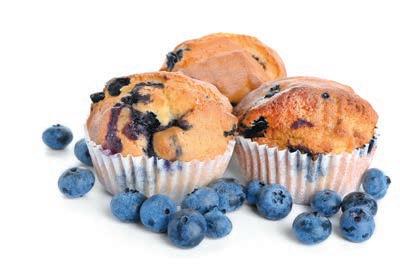
YIELD: 12 TO 24 SERVINGS
3 cups almond flour
6 eggs
½ cup honey
½ cup avocado oil
1 tsp baking soda

1 tsp salt
1 cup blueberries
Preheat the oven to 350° F. In a large bowl, combine all the dry ingredients—almond flour, baking soda and salt—and whisk well. In a separate smaller bowl, combine the wet ingredients—eggs, honey and avo cado oil—and blend until smooth.
Then pour the wet ingredients into the dry ingredients and mix until thoroughly combined. Fold in blueberries. Line cup muffin tin with paper liners and pour in batter. Bake for 15 to 20 minutes.
Recipe courtesy of Madiha Saeed, M.D., ABIHM.
It’sno secret that a regular medita tion practice can yield many health benefits. By refocusing one’s attention on something relaxing, it can lower stress levels and leave one with a sense of calm, balance and peace, even during difficult times. Meditation has also been known to help control pain, decrease blood pressure levels and improve sleep. While this an cient art is wonderful for our overall wellbeing, it can be quite challenging to do.
Meditation requires more than just sitting still and concentrating on the breath. One must be aware of one’s thoughts and calm one’s busy mind, and it can take years before one might experience significant benefits.
Luckily, BrainTap is available to as sist one in achieving the same amazing benefits as mindfulness meditation but in a lot less time. The BrainTap headset, with advance technology and eye-covering device, runs off an app that can be downloaded on one’s phone.

BrainTap is a quick and easy way to relax, reboot and revitalize. It works by sim ply optimizing the brain’s peak potential—anytime, anywhere. It is backed by neurosci ence and research, and is proven to help those who experience difficulty sleeping, high stress, low energy, and other lifestyle challenges.

BrainTap guides one’s mind from an awake, reactionary mind into an intuitive, creative state, to a place where super-learning and healing can occur, resulting in a heightened state of consciousness with crystal-clear focus.
A symphony of brain wave activity is created by BrainTap, resulting in a feeling of calm focus that’s just right for learning and productivity. Each session is designed with brain wave balance in mind. Unlike meditation programs, BrainTap uses exclusive neuro-algorithms that gently and naturally guide one’s brain through a broad range of brain wave patterns, instead of just the alpha state. BrainTap actuates the complete spectrum of brain wave activity.
BrainTap has a large selection of specialized audio sessions that can be downloaded. The audio sessions are calming and have rejuvenating effects. A 20-minute audio ses sion can balance one’s nervous system and inoculate one against the stressors of every day life. Daily BrainTap audio sessions are designed to train one’s brain to be resilient and creative, and to activate the right mental state at the right time.
Malissa Stawicki is a holistic health advocate at Natural Medicine and Detox, in Phoenix, where they are offering an introduction session at no cost. They want people to be able to have this tool to use at home and to help more people. To set up an appointment, call 602307-0888. See ad, page 10.
 by Ronica O’Hara
by Ronica O’Hara
It is an all-too-human experience to have anxiety—feeling fear or apprehension about what might happen. A survival mecha nism for our species, it can easily get out of hand in times of uncertainty, morphing from a timely signal to a crippling, chronic condition. Happily, mental health professionals have found many useful anti-anxiety strategies to ease us through difficult moments.
“Controlling your breathing is a fantastic hack to help you move out of a
stress/anxiety response state. It’s important to try different breath ing techniques to figure out which ones work for you,” says Krista Jordan, Ph.D., a clinical psychologist in Austin, Texas. Many op tions exist such as breathing slowly into the belly; inhaling through the nose for a count of four, holding the breath for a count of seven and exhaling through the mouth for a count of eight; slowing the breath so that the in and out breaths equalize; and placing mindful attention on our breathing until 10 breaths are completed Tap with the Fingers
Emotional Freedom Technique (EFT) is a five-minute approach us ing two fingers to tap on specific points of the head and chest in a certain sequence. In one 5,000-person study, 76 percent of par ticipants found anxiety relief after three EFT sessions, while
only 51 percent experienced relief after 15 sessions of cognitive behavioral therapy.
“EFT sends a calming signal to the brain that reduces your anxiety, which allows for newfound thinking and solutions,” says Colorado Springs therapist Dana C. Avey. Simple instructions can be found online and in YouTube videos.
Whether it’s a three-page brain dump in the morning, a frantic scribbling on paper in a stressful moment or a nightly ritual in a bound journal, writing out anxious thoughts helps clarify worries and puts things into perspective, research shows. Seattle spinal surgeon David Hanscom, a chronic pain expert and author of Back in Control, counsels writing down in longhand whatever is on the mind using graphic and descriptive language twice a day for 10 to 30 minutes, and then promptly tearing it up to let the thoughts go.
Many soothing types of meditation can be tried out on apps like Calm, Insight Timer and Headspace, but the best-studied approach for anxiety is mindfulness, which involves focusing on the breath and body sensations while letting distracting thoughts float by. A 2017 Australian study found that just 10 minutes of daily mindful meditation can help prevent the mind from wandering and is particularly effective for repetitive, anxious thoughts. “Just be clear that having a constant stream of thoughts is fine and part of the process. It’s sadly ironic that people turn to meditation to help with anxiety, and then get anxious that they are doing it wrong,” advises Jordan.
According to the Harvard Health Letter, “Just a single bout of exercise can ease anxi ety when it strikes ” Studies have proven the value of everything from aerobics to swimming and yoga, and it’s even better if exercising can be done outdoors, because decades of research have found that being amidst the sights, sounds and scents of natural settings lowers anxiety markers. In a recent study, walking without using a smartphone or another electronic device in urban settings just two hours a week
reduced cortisol levels 21 percent in 20 minutes, “which helps to reduce the medical effects of stress, including chronic inflam mation, GI disorders and heart problems,” says Santa Barbara-based John La Puma, M.D., co-founder of the ChefMD health media brand and creator of MyNatureDose. com, a free, anti-anxiety walking program.
Making a deep spiritual connection—an age-old anxiety solution—can involve pray ing or for example, reading psalms, saying a rosary, chanting a mantra or reading sacred scripture. Eric Almeida, a mental health practitioner in Bernardston, Massachusetts, recommends the Serenity Prayer: “God, grant me the serenity to accept the things I cannot change, the courage to change the things I can and the wisdom to know the difference.” He says, “It doesn’t matter if you believe in God, the wisdom is useful nonetheless.”
“Sip cold water, hold ice cubes, take a cold shower, blast the AC in your face. Our body and mind are very connected, so if you can’t cool down your mind, cool down your temperature,” advises San Diego-ba sed marriage and family therapist Sarah O’Leary. Some people find the opposite works: taking a long, hot bath infused with essential oils like bergamot, frankincense and lavender.
Stand barefoot in grass or dirt while breath ing deeply or imagine the roots of trees growing from the soles of the feet deep into the earth. “This helps ‘ground’ you or ‘root’ you, and can help you find steadiness rather than getting lost in anxiety,” says mindfulness trainer and author Joy Rains of Bethesda, Maryland.
Boston integrative medicine physician Sarika Arora, M.D., of the Women’s Health Network, recommends vitamins B5, B6 and B12 to improve cellular energy, lower cortisol and restore equilibrium to the nervous system; magnesium to support balanced metabolism and increase feelings of calm; L-theanine, found in green tea,
to lower stress hormone levels; eleuthero (Siberian ginseng) to limit excess cortisol; and vitamin E to support hormone production and stress recovery.
Tyler Read, the San Francisco-based owner of Personal Trainer Pioneer, de cided to bite the bullet by using the tools of dialectical behavior therapy to put him self into anxiety-producing public places. “Instead of convincing myself that I was at peace or not nervous, I accepted that I was nervous. I gave myself permission to shake, sweat and feel nauseous; at times, I acknowledged that I felt like I was dying. And by permitting myself to be nervous, the anxiety decreased over time,” he says.
Relaxing music can be as effective as medication in altering brain function, re search suggests, especially if the rhythm is 60 beats per minute, which encourages the slow brainwaves associated with hypnotic or meditative states. Dancing to upbeat music like no one is watching can also chase worries away. Holistic psychothera pist Kellie Kirksey, Ph.D., of Youngstown, Ohio, suggests shaking to a favorite song: “Begin by shaking out the hands while holding the thought, ‘I let go.’ If shaking the hands feels good, add in shaking one leg at a time. Shake the whole body while imagining yourself releasing the tension stored in your muscles.”
Merely petting a dog or cat releases the feelgood bonding hormone oxytocin into our system. “Animals speak to you in a nonverbal communication, so the interac tions require you to be present and to feel. Both allow for a meditative experience that is tremendously impactful for reducing anxiety,” says Shannon Dolan, an Austin, Texas, nutritional therapist and horse owner. “If you don’t have your own pet, look up equine therapy in your area, go to a local dog shelter, spend time with a friend’s dog or travel out to a petting zoo, where you can experience the healing power of animals.”
Health writer Ronica O’Hara can be reached at OHaraRonica@gmail.com.
Animals offer support to humans in innumerable ways, acting as loyal companions, providing soothing therapy and emotional support, and being attentive service animals for invaluable med ical assistance. As animals increasingly take on these roles in public spaces, it is neces sary to understand what each category offers and the type of access each is given.
“Some people misrepresent their animals as assistance animals in order to bring them to places where pets are not allowed, to avoid fees or out of a misunderstanding of the animal’s role,” states the American Veteri nary Medical Association (avma.org). It points out that although service, therapy and emotional support animals are sometimes referred to interchangeably, they are distinct categories, each with its own definition.
As defined by the U.S. Department of Housing and Urban Development, an as sistance animal is “any animal that works, provides assistance or performs tasks for the benefit of a person with a disability, or provides emotional support that allevi ates one or more identified symptoms or effects of a person’s disability.” If certain conditions are met, a person may be entitled to keep an assistance animal in a housing facility that would otherwise prohibit animals.
The Americans with Disabilities Act of 1990 defines a service animal as “any dog that is individually trained to do work or perform tasks for the benefit of an individual with a disability, including a physical, sensory,

psychiatric, intellectual or other mental disability.” Aside from miniature horses, no other species are included.
Service animals perform such tasks as helping with navigation, pulling a wheel chair, assisting during a seizure, providing protection or rescue work, alerting a person to allergens and interrupting impulsive or destructive behavior.

Emotional support animals (ESA), accord ing to the Fair Housing Act and the Air Carrier Access Act (ACAA), can be any species. Both laws require a disability-related need and a recommendation by a medical or mental health professional. ESAs do not have to be trained to perform a particular task and may be permitted in otherwise banned housing facilities. Some interna tional airlines allow them to travel at no ex tra cost. As of January 2021, following a U.S. Department of Transportation rule-tighten ing, virtually no American domestic airline allows ESAs to fly free. (Small dogs can still be flown by passengers paying extra.)
According to the ACAA, therapy animals may take part in animal-assisted interven tions when there’s a “goal-directed interven tion in which an animal meeting specific criteria is an integral part of the treatment process.” Animal assisted therapy may involve dogs, cats, horses, llamas, pigs and other species, typically in hospitals, schools and rehabilitation centers.
While service animals are highly trained and can even receive certifications as psychiatric service dogs, ESAs are often pets that help a person to cope with daily life or situ ations they may otherwise find intolerable, such as being in stores, restau rants, museums and on airline flights and other public transportation.
Controversy has arisen when some people have pushed the line, claiming their pet is necessary for emotional support, but in reality, are just there to enjoy access benefits. Yet, in a survey of more than 500 Americans, both service dogs and emo tional support dogs were viewed favorably, and most participants reported feeling that the majority of people with such dogs were not taking advantage of the system.

There is seemingly no end to the emotional, physical and mental benefits dogs offer to humans. Regular visits with therapy dogs may improve the well-being of people seek ing addiction and mental health treatment. Animal-assisted interventions have been used among Canada’s correctional popula tion, for which mental health, addictions and trauma histories are major concerns.
Research published in the journal Anthrozoös found that animal-assisted therapy decreased the need for pain medica tion in people receiving joint replacement therapy. Studies by the Delta Society sug gests holding, stroking or simply seeing an animal may lower blood pressure while lessening feelings of hostility and increasing self-esteem. For children, service dogs can be trained to detect the scent of allergens like peanuts or gluten in food and even pro vide comfort to them and adult witnesses in courtrooms.
Be aware that out in public, certain rules of etiquette apply. Service dogs, in particu lar, should never be approached, talked to or touched unless permission is granted by the dog’s handler. And take no offense if the handler says no. Distracting a working dog can result in potential harm to the handler and may interfere with the dog’s focus and ability to follow potentially life-saving commands or cues.

Veterinarian Karen Shaw Becker, DVM, has spent her career empowering animal guardians to make knowledgeable decisions to extend the life and well-being of their animals.
coming in the december issue
Decades ago, environmental groups urged the banning of what are known as forever chemicals, which have been linked to cancer, compromised immune systems and hormonal imbalances, among other health issues. Today, although some of these manmade per- and polyfluoroalkyl substances (PFAS) are being phased out, there’s still much to worry about.
“These chemicals are everywhere–in products, in our homes, in our drink ing water. They’re even coming down in rain,” says Mike Schade, director of the Mind the Store program of ToxicFree Future (ToxicFreeFuture.org national nonprofit based in Seattle. “This is a growing public health crisis.”
A recent Environmental Working Group (ewg.org) report says that 200 mil lion Americans are likely drinking water contaminated with PFAS, and that these chemicals are even more toxic than once thought. In June, the U.S. Environmen tal Protection Agency (EPA) established new health advisories for these chemicals, warning about the toxicity of even lower amounts in water. The EPA is offering $1
billion in grants initially and $5 billion over time to help remove them from drinking water. Recent research has also shown PFAS detected in sludge used as fertilizer in home gardens. “We need action at all levels of government,” Schade says. “We need states to step up. We need Congress to step up. We need big companies to step up and consum ers to take action.”

Since the late 1940s, forever chemi cals have been manufactured for use in products such as nonstick cookware; wa terproof, water-resistant and stain-resistant textiles; dental floss; and food packaging, such as microwave popcorn bags and fast-food contain ers. Firefighters also use foam that contains the chemicals.
“Production and disposal of these chemicals is leading to the contamina tion of drinking water supplies and surface water bodies all across the country,” Schade says. “It’s a huge issue, especially in the Great Lakes.”
“We’re talking about more than 9,000 chemicals,” says Susie Dai, Ph.D., a leading PFAS researcher and an associate professor of plant pathology and microbi ology at Texas A&M University. “Because they contain one of the strongest chemical bonds, the carbon-fluorine bond, they are very stable. That makes it difficult for the chemicals to break down and easy for them to accumulate in the environment.”
Several years ago, chemical companies began manufacturing what they deem are less-toxic PFAS. They’re known as either
short-chain or alternative PFAS, and include chemicals named GenX and PFBS. “The more that scientists study this very large class of chemicals, the more that scientists find the replacement chemicals are likely just as toxic,” Schade says. The EPA June health advisories include these two new PFAS.
Meanwhile, as public concern grows, 11 states have banned PFAS in food packaging, and Congress is considering a similar ban, says Schade. Whole Foods Market has stopped using the chemicals in food packaging, and Keen, an outdoor shoe brand, has phased out use of PFAS in their products.
In February, Toxic-Free Future sent rain jackets, hiking pants, cloth napkins, bedding and other products marked as stain- or water-resistant to independent labs for analysis. “Seventy-two percent of them contained forever chemicals,” Schade says. Some of these products are manufactured by recreational equipment com pany REI, which Toxic-Free is urging consumers to write to, asking it to end the practice.
In July, Columbia Sportswear received petitions with 48,000 signatures from the Natural Resources Defense Council and other environmental organizations urging the company to eliminate PFAS from its products. Although it has begun taking steps, Columbia has yet to set a timeline or define PFAS sustainability standards.
“We can minimize the threat of PFAS contamination by turning off the tap on their use,” says Paloma Paez-Coombe, an associate of Environment Illinois, which participated in the petition drive. “One of the best ways we can do that is by getting a major brand like Columbia Sportswear to publicly lead the way.”
These actions, however, won’t fix the problem of PFAS already in drinking water. Dai and other researchers have created a new bio remediation technology using plant-based material and fungi that could clean places where forever chemicals have been disposed. She hopes a similar concept can be applied to PFAS-contaminated drinking water.
Northwestern University researchers published a paper in August in Science showing PFAS can be destroyed using somewhat harmless chemicals called sodium hydroxide, which is the lye used to make soap, and dimethyl sulfoxide, a medicine for bladder issues. Dai says that before these new approaches, the only way to break down PFAS was to expose them to high temperatures in an incinerator, but that is costly and still introduces harmful chemicals into the environment.

Meanwhile, the Delaware-based chemical company Chemours, a spinoff of Dupont that manufactures PFAS, has filed a lawsuit against the EPA saying the agency’s most recent health advisory regarding PFAS is based on flawed science. Chemours is the same company that has been ordered to pay a $12 million fine to the state of North Carolina after contaminating waterways with PFAS.
Schade surmises, “This is an issue that should be of concern to every American, especially when these chemicals are linked to health problems that are on the rise in our communities.”
Sheryl DeVore has written six books on science, health and nature, as well as health and environmental stories for national and regional publications. Read more at SherylDeVore.wordpress.com.
n Choose textiles and carpeting without water- and stain-repellency.
n Avoid food with greaseproof packaging, such as micro wave popcorn.
n Stay away from personal care products with perfluor, polyfluor or PTFE on the label.
n Choose PFAS-free products, some of which are listed at pfasCentral.org.
n Contact businesses to ask them to stop selling products that contain PFAS.
n Reach out to legislators to urge the passage of laws to ban PFAS unless their use is essential.
Sources: Toxic-Free Future, Green Science Policy Institute and Environment Illinois.
Opening a brand-new box of crayons or making a happy mess with homemade salt dough can provide hours of fun for most kids, but art therapy—based in a clinical setting—can help children achieve emotional equilibrium, culti vate social skills and increase their capacity for learning. Dipping a brush into bright colors or creating a collage under the guidance of a qualified therapist can help a child express what is beyond spoken language: unprocessed trauma, emotional and physical pain or the multilevel challenges of autism spectrum disorder.
“Art therapy is completely different from arts and crafts, or even teaching a child how to do art. The idea behind art therapy is that not everyone attending therapy is able to talk about what is going
on inside of them,” says Robyn Spodek-Schindler, owner of Paint the Stars Art Therapy, in Manalapan, New Jersey.
According to 2018 research published in the Journal of Applied Psychology & Behavioral Science, painting-based art therapy has been effective in reducing symptoms of depression and anxiety in preschool-aged children. Dipping into the unconscious wellspring of creative impulse through doodling and drawing, finger painting or taking a photograph can help kids bounce back more easily from bullying or family conflicts, including divorce. Splashing color on a canvas or throwing pottery has been shown to enhance fine motor

skills, increase attention spans and instill a sense of accomplishment. For those that are not neurotypical, engaging in guided artis tic expression can foster sensory integration and promote positive social interaction. “I have worked with children who have lost a parent, experienced abuse, abandon ment, consequences of addiction in the family, COVID [-19] anxiety and autism spectrum disorders,” says Andrea Davis, founder and CEO of Dallas Art Therapy, in Richardson, Texas. “Many times, the body is expressing the trauma in the form of sleep disturbance, eating changes, anxiety, depression and panic attacks, to name a few. Art-making bypasses the brain’s trauma response. The art therapist is trained to support the person in the process of creation and allows the person to utilize their other senses to express themselves.”
Celeste Wade, an art psychotherapist at the Child and Family Art Therapy Center, in Haverford, Pennsylvania, emphasizes that emotional processing cannot oc cur when an individual is on the alert for potential danger, a physiological response from an overstimulated amygdala. “Trauma needs to be processed for the client to gain mastery and function in a calm state versus fight, flight or freeze. Art making can also activate this area of the brain and have calming effects to counteract trauma responses,” she says.
November 12 • 10-11am
Join us for Yoga outdoors in the Moon Gate Garden. Experience the impact of Frank Lloyd Wright’s organic architecture and design through guided activities, such as Yoga, Tai Chi, meditation and hiking.
Cost: $25
12621 N Frank Lloyd Wright Blvd, Scottsdale
480-860-2700
Register at: FrankLloydWright.org/ taliesin-west/wellness
The art therapist provides a nourishing presence without art instruction or critiqu ing, and sessions can be private, in a group setting or include family members. Conver sation, combined with art making, is typical in any art therapy session. Schindler stresses that creating pretty images is not the goal of an art therapy session and dispels the com mon assumption that “the person attending art therapy needs to have either a talent in art or an interest in art. They just need the willingness to participate in a session.” Some children see immediate benefits, while others realize emotional progress after several sessions.
Art therapy, sometimes in conjunc tion with other modalities, not only gives children a voice, but provides them with an opportunity to stretch their wings. Group therapy, says Davis, “can look like working together to create a collaborative mural. In the process, taking turns, hearing one an other’s ideas, sharing materials, respecting boundaries and each other’s art becomes an important part of meeting goals.”
During an initial art therapy assessment, Wade might ask a client to draw a family of animals, which creates an opportunity “for the client to share about their own family dynam ics in a safe way. If the client has experienced any type of familial trauma and I were to present the same directive as, ‘draw you and your family doing something,’ the child may
November 22 • 5:30-6:30pm
Join us for Yoga outdoors in the Moon Gate Garden. Experience the impact of Frank Lloyd Wright’s organic architecture and design through guided activities, such as Yoga, Tai Chi, meditation and hiking.
Cost: $25
12621 N Frank Lloyd Wright Blvd, Scottsdale
480-860-2700
Register at: FrankLloydWright.org/ taliesin-west/wellness
be more hesitant or may shut down.”
In a world that can be overwhelming, selfexpression through art can give a young person a safe harbor. Schindler accentu ates human rapport in the clinical setting, saying, “Art, much like play, is a universal communication tool for children. Some times you just feel better when creating and sharing with a trusted person.”
Marlaina Donato is an author, painter and composer. Connect at WildflowerLady.com.
December 3 • 10-11am
Join us for Yoga outdoors in the Moon Gate Garden. Experience the impact of Frank Lloyd Wright’s organic architecture and design through guided activities, such as Yoga, Tai Chi, meditation and hiking.
Cost: $25
12621 N Frank Lloyd Wright Blvd, Scottsdale
480-860-2700
Register at: FrankLloydWright.org/ taliesin-west/wellness
December 20 • 5:30-6:30pm
Join us for Tai Chi outdoors in the Moon Gate Garden. Experience the impact of Frank Lloyd Wright’s organic architecture and design through guided activities, such as Yoga, Tai Chi, meditation and hiking.
Cost: $25
12621 N Frank Lloyd Wright Blvd, Scottsdale
480-860-2700
Register at: FrankLloydWright.org/ taliesin-west/wellness
Connecting you to the leaders in natural health care and green living in our community. To find out how you can be included in the Business Directory, email PhoenixAds@NaturalAZ.com or visit NaturalAZ.com and download our media kit.
5705 N Scottsdale Rd, Ste D-110, Scottsdale 480-948-0560
MillDental.com
Pavel Gershkovich, CHP, CRP, PMP, Therapist 8765 E Bell Rd, Ste 110, Scottsdale 480-621-6041






PIHMA COLLEGE & CLINIC Acupuncture, Herbal Medicine and Homeopathic Clinic 301 E Bethany Home Rd, Ste A-100, Phoenix 602-274-1885 • pihma.edu

• ArizonaLeechTherapy.com
ArizonaLeechTherapy@gmail.com
Pavel Gershkovich, owner of Arizona Leech Therapy, is a professional medicinal leech therapist. He is here to help you find a natural, drug-free solution for your medical conditions, such as cardiovascular, high blood pressure, migraine, urology/ prostate, varicose veins, and deep venous thrombosis. See ad, page 12.


Chiropractic Physician, Neurotherapist 928-537-2963 • DrLisonbee@yahoo.com DrLisonbee.com
Appointments remotely or in person in Tempe and the White Mountains. Life-changing natural protocols for supporting you in improving health challenges with Fatigue, Type 2 Diabetes, Stress, Immune System, Childbirth, Pain, Sleep and more. See ad, page 10.
2701 N 7th St, Phoenix 602-307-0888

NaturalMedicineDetox.com
We offer professional medical assistance with one of our Doctors of Acupuncture & Oriental Medicine, MD(H), or Classical Homeopaths. We also have several self-elect options for our many detox services. Please call to schedule a free 15-minute consult to learn what service might be the best option. See ad, page 10.
PIHMA offers Acupuncture Treatments, Herbal Consulta tions, Acute and Constitutional Homeopathic Consultations, as well as Auricular Acupuncture, Cupping, Moxibustion, Gua Sha and Tui Na. Our medicines have been used for thousands of years to treat numerous conditions, including pain, stress and more. PIHMA is a teaching clinic and offers affordable pricing.
SW HERB SHOP & GATHERING PLACE 148 N Center St, Mesa 480-694-9931 • SWHerb.com Store.SWHerb.com
Kathy Gould and Madalyn Johnson, herbalists and proprie tors, offer medicinal bulk herbs and specialty tea blends, herbal extracts, certification classes, community and therapist rental space, medicine-making supplies, and more. See ad, page 11.
Allura Westly 3611 E Sunnyside Dr, Phoenix AlluraWatercolor@cox.net 602-469-0524 • AlluraWaterColor.com
Allura Westly, master teacher, opens her sanctuary studio to all levels, beginner to advanced. Learn fluid color technique, drawing and composition. Small class of eight students. No talent required, just a desire to create.
Millennium Dental offers more than 50 years’ experience in holistic dentistry, including advanced general dentistry Certified by the IABDM. See ad, page 9.
Dr. Michael Margolis and Dr. Stephen Kovar
2045 S Vineyard Rd, Ste 153, Mesa 480-833-2232 • MyDentistAZ.com

A holistic and biological ap proach to your dental needs and overall health. Bio-com patible dentistry, esthetic dentistry lumineers/veneers, family dentistry and much more. See ad, page 3.

3134 W Carefree Hwy, Ste 9, Phoenix 602-775-5120 • MyNaturalDentist.com
The doctors at Natural Dental Partners take the time to listen to your concerns and use their extensive experience to help you achieve better health. Using the latest technology (such as lowdose 3D imaging, CEREC, lasers, PRF, ozone and treatment of sleep disorders), they believe in a team approach to help you achieve your healthcare goals. Check out MyNaturalDentist. com or ABreathOfHealth.com to see how they can help you. See ad, pages 5 and 20.
Jason A. Jones, DMD
7231 E Princess Blvd, Ste 207, Scottsdale 480-585-1612
• PureSmilesAZ.com
MacKenzie Kalt, Owner/Director 4050 E Greenway Rd, Ste 5, Phoenix 480-594-5052



• NatPainTreat.com
Providing some of the most advanced natural technologies for those struggling with chronic pain, injuries, stress, migraine headaches, PTSD, insomnia, Lyme disease, autoimmune disorders, skin conditions, and much more. Visit our website to learn more. See ad, inside front cover and page 33.
Valleywide Service • 480-994-4988 BennettsCarpetCleaningAZ.com
Eco-friendlycarpet and upholstery cleaning. Featur ing organic cleaners and


odor removal products derived from renewable seed and vegetable sources. No perfumes, solvents or other hazardous products. No phosphates. Products also available for in-home use. Licensed and owner operated since 1974. See ad, page 16.
Exceptional dental service with dedication to comfort and compassion. We carefully assist each procedure and select the products to help preserve and protect your overall well-being. See ad, page 10.
Melanie Icard, NMD
1430 E Missouri Ave, Ste B127, Phoenix 480-599-8370 • ButterflyHolistic.com
Dr. Icard specializes in biological medicine, peptides, PRP, aesthetics and ozone therapy. Her offerings include holistic antiaging medicine, pain reversal, natural and traditional aesthetics, ozone therapy, holistic ketamine therapy, and sexual health regeneration. See ad, pages 10 and 31.
KIM CARTER, MA, HTCP
15215 S 48th St, Ste 154, Phoenix
Kim@IntuitiveKim.com
IntuitiveKim.com
Kim is an Intuitive and Healing Touch Certified Practitioner offering guidance when you feel out of alignment with your authentic self. Stress, fear, anxiety and grief/loss throw us off balance, making it challenging to access inner wisdom. Sessions include reading and clearing your energy field; and simple, practical self-healing tools to keep you balanced and grounded. See ad, page 10.
FENG SHUI 81
Lori Thomas Feng Shui Instructor/Practitioner 480-370-3310 • FengShui81.com

Feng shui is a study of how energy flows in one’s home. Lori Thomas offers private consultation and classes to teach how to correct energy imbalances to prevent mishaps in one’s life, improving health, abundance, relationships and more. She is an Intuitive with extensive training in feng shui and healing arts. See ad, page 16.
SCNM MEDICINARY
2152 E Broadway Rd, Tempe 480-970-0001 • Shopscnm.com
The SCNM Medicinary is the largest natural medici nary in Arizona, providing a wide variety of vitamins, nutritional supplements, books, herbs, homeopathic remedies, tinctures and other health products. Order by phone at 480-9700001 or visit us today – we offer shipping and curbside pickup! See ad, page 11.
Standard Pro cess is a Wis consin-based, family-owned company that
has been a leader in making whole food-based nutritional supplements since 1929, and is com mitted to changing lives by partnering with healthcare practitioners to support optimal health through nutrition. See ad, page 6.

Linda Sulvita, Intuitive Hypnotherapist Heal@LindaSulvita.com LindaSulvita.com
Intuitive hypnotherapist Linda Sulvita facilitates self-healing and self-empowerment for lightworkers, spiritual seekers, healers, empaths and intuitives through spiritual hypnosis. Grounded in unity consciousness, she helps clients release past-life trauma, break patterns of self-sabotage, transform limiting beliefs, and receive clarity of next steps. See ad, page 13.

Avoid being exposed to dangerous chemicals when all-natural and safer alternatives work just as well and last longer. See ad, page 17.
ASAM, Sh. Reiki, HTAP
Animal Communicator and Counselor 602-317-1543 • CritterDoc1@cox.net
SpiritAnimalWisdom.com
With a gentle healing touch, Andrea provides earth medicine and energy healing, animal communication, and intuitive counsel for pets and their people.





1538 E Southern Ave, Tempe 480-994-9244
Info@swiha.edu • swiha.edu
Nationally accredited college offers holistic health and wellness degrees, diplomas, certificates of excellence, continuing education and personal development, oncampus and online. Financial aid available. See ad, outside back cover.

The Path of Spiritual Freedom
1-877-300-4949 • EckankarArizona.org Eckankar.org • HearHU.org Facebook.com/EckankarArizona
Eckankar is an active, individual, creative spiritual practice. A companion and roadmap for your journey home—to the heights of SelfDiscovery and God-Discovery, and beyond. Come along and discover the most secret part of yourself. The key to spiritual freedom lies within you. Explore life as a Soul Adventure. See ad, page 13.

4105 N 20th St, Ste 115, Phoenix 480-442-5020
SummitLighthousePhoenix@gmail.com
SummitLighthousePhoenix.org
Dedicated to sharing Saint Germain’s Violet Flame. All faiths welcome. Learn how you can become a modern day mystic. We are dedicated to sharing the Teachings of the Ascended Masters® to help you bring in joy and peace to the world. Learn what the requirements are to make your ascension. See ad, page 11.
Roadrunner Park Farmers Market
3502 E Cactus Rd, Phoenix
Saturdays Oct-May 8am-1pm | Jun-Sep 7am-11am
Facebook.com/RoadrunnerParkFarmersMarket
Singh Meadows Farmers Market
1490 E Weber Dr
Fridays, Saturdays & Sundays 8am-2pm
Facebook.com/SinghFarms
Sun City Farmers Market
16820 N 99th Ave
Thursdays Oct-May 9am-1pm
Facebook.com/Sun-City-Farmers-Market631299790224049



The Capitol Farmers Market
1700 Adams St, Phoenix
Thursdays 10:30am-1:30pm
ArizonaCommunityFarmersMarkets.com
Uptown Farmers Market
5757 N Central Ave, Phoenix
NOTE: Please check market websites and ArizonaCommunityFarmersMarkets.com for more information on days and hours, and any restrictions.


Ahwatukee Farmers Market
4700 E Warner Rd, Phoenix
Sundays Oct-May 9am-1pm
Jun-Sep 8am-11am Facebook.com/AhwatukeeFarmersMarket
Care 1st Farmers Market
328 W Western Ave, Avondale
Tuesdays Jul-Oct 8am-noon
ArizonaCommunityFarmersMarkets.com
Carefree Farmers Market
1 Sundial Circle
Fridays Oct-May 9am-1pm
Jun-Sep 8am-11am
Facebook.com/CarefreeFarmersMarket
Downtown Chandler Farmers Market
3 S Arizona Ave
Saturdays Oct-May 9am-1pm
Jun-Sep 7am-10:30am Facebook.com/ChandlerFarmersMarket
Downtown Mesa Farmers Market
1 E Main St
Saturdays 8am-noon dtMesaFarmersMarket.com
Downtown Phoenix Farmers Market
721 N Central Ave
Saturdays Oct-Apr 8am-1pm May-Sep 7am-11am
DowntownPhoenixFarmersMarket.org
Gilbert Farmers Market 222 N Ash St
Saturdays Oct-Mar/Apr 8am-noon Apr/May-Sep 7am-11am GilbertMarket.com
High Street Farmers Market
5415 E High St, Phoenix
Sundays Oct-May 10am-1pm
Facebook.com/Farmers-Market-on-HighStreet-2244771575799425
Mommas Organic Market
Arrowhead Farmers Market
7780 W Arrowhead Towne Center, Glendale
Saturdays Oct-May 9am-1pm | Jun-Sep 8-11am Facebook.com/Getlocalazfarmersmarkets GetLocalArizonaEvents.com
Glendale Farmers Market at Cabela’s 9380 W Glendale Ave, Glendale, AZ 85305
Sundays Sep-May 10am-2pm | closed for summer Facebook.com/Getlocalazfarmersmarkets GetLocalArizonaEvents.com
Old Town Scottsdale Farmers Market 3806 N Brown Ave
Saturdays 8am-1pm
ArizonaCommunityFarmersMarkets.com
Power Road Farmers Market 4011 S Power Rd, Mesa
Monday-Saturday 9am-5pm | Sunday 9am-4pm
PowerrdFarmersMarket.com
Wednesdays Oct-Apr 9am-1pm & May-Jun 8am-noon
Saturdays Nov-Apr 9am-1pm & May-Oct 8am-noon
UptownMarketAZ.com
Verrado Community Farmers Market

N Market Pl & W Main St, Buckeye Sundays Oct-Jun 9am-1pm
Facebook.com/VerradoCommunityFarmersMarket
Flagstaff Community Farmers Market
211 W Aspen Ave, City Hall Parking Lot
Sundays May-Oct 8am-noon
FlagstaffMarket.com
Prescott Farmers Market
Dignity Health, YRMC
900 Iron Springs Rd, Miller Valley Lot
Saturdays 7:30am-noon
PrescottFarmersMarket.org
Sedona Summer Community Farmers Market
Tlaquepaque/Creekside, 336 Hwy 179
Fridays May-Oct 8-11:30am
Sedona-Farmers-Market.com
Sedona Winter Community Farmers Market
Wells Fargo Bank Parking Lot
2201 W State Rte 89A, West Sedona
Sundays Oct-May noon-4pm
Sedona-Farmers-Market.com

Scientists have discovered a natural way to kill germs fast. Now thousands of people are using it against viruses and bacteria that cause illness.
Colds and many other illnesses start when viruses get in your nose and multiply. If you don’t stop them early, they spread and cause misery.
Hundreds of studies confirm copper kills viruses and bacteria almost instantly just by touch.
That’s why ancient Greeks and Egyptians used copper to purify water and heal wounds. They didn’t know about viruses and bacteria, but now we do.
“The antimicrobial activity of copper is well established.” National Institutes of Health.
Scientists say copper’s high conductance disrupts the electrical balance in a microbe cell and destroys it in seconds.
The EPA recommended hospitals use copper for touch surfaces like faucets and doorknobs. This cut the spread of MRSA and other illnesses by over half, and saved lives.
The strong scientific evidence gave inventor Doug Cornell an idea. He made a smooth copper probe

with a tip to fit in the bottom of the nostril, where viruses collect.
When he felt a tickle in his nose like a cold about to start, he rubbed the copper gently in his nose for 60 seconds.
“It worked!” he exclaimed. “The cold never happened. I used to get 2-3 bad colds every year. Now I use my
device whenever I feel a sign I am about to get sick.”
He hasn’t had a cold in 10 years.
“It works! I love it!”
“I can’t believe how good my nose feels.”
“Is it supposed to work that fast?”
“One of the best presents ever.”
“Sixteen flights, not a sniffle!”
“Cold sores gone!”
“It saved me last holidays. The kids all got sick, but not me.”
“I am shocked! My sinus cleared, no more headache, no more congestion.”
“Best sleep I’ve had in years!”
After his first success with it, he asked relatives and friends to try it. They all said it worked, so he patented CopperZap® and put it on the market.
Soon hundreds of people had tried it. 99% said copper worked if they used it right away at the first sign of germs, like a tickle in the nose or a scratchy throat.
Longtime users say they haven’t been sick in years. They have less stress, less medical costs, and more time to enjoy life.
Soon people found other things they could us it against.
Nasal drip
Infected sores
Infected wounds
The handle is curved and textured to increase contact. Copper can kill germs picked up on fingers and hands after you touch things other people have touched.
The EPA says copper works just as well when tarnished.
Dr. Bill Keevil led one of the science teams. He placed millions of viruses on a copper surface. “They started to die literally as soon as they touched it.”
CopperZap® is made in the USA of pure copper. It has a 90-day full money back guarantee. Price $79.95. Get $10 off each CopperZap with code NATA32.
Go to www.CopperZap.com or call toll-free 1-888-411-6114.
Statements are not intended as product health claims and have not been evaluated by the FDA. Not claimed to diagnose, treat, cure, or prevent any disease.
New research: Copper kills viruses in seconds.

